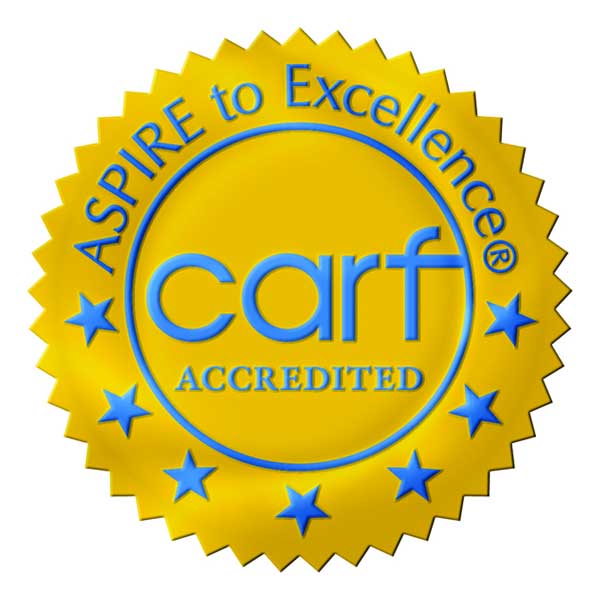GET HELP NOW
513.792.1272
Success Rate

The ASAP TRIP program consistently shows an abstinence success rate well above the national average.This one measure of success – abstinence – includes only those clients who remain completely sober for a year after treatment. The success rate for graduates of the TRIP program can be measured in other ways, as well.
Defining Success
A third to one half of teens treated for alcohol or drug problems return to some drug use at least once within a year. At ASAP, abstinence is vital. Our internal research and follow up surveys show additional positive changes in other areas of a teen’s life after treatment. Clients see positive changes in the following areas:
- increased trust from parents
- higher grades
- developing healthier relationships
- improved mental health
- better family life
Graduates from TRIP IOP (Total Recovery in Progress, our intensive outpatient program) who participate in Continuing Care and/or get involved in a Mutual Support Group show the most positive changes. If a lapse into substance use occurs, it is for shorter period of time or less severe. Families find relapses less disruptive because they know where to get help, and they no longer minimize or deny the problem.
Why are SUD difficult to treat?
Drugs work in the brain to produce feelings of pleasure and euphoria, so it can be especially hard to stop using them, even when an individual has experienced and recognized negative consequences. While the initial decision to take a drug is usually voluntary, once substance use disorder (SUD) is diagnosable, the person may unknowingly lose the ability to exert self-control. The TRIP treatment program focuses on influencing the adolescent’s decision-making and developing each parent’s skills to better manage this illness.
Understanding and coping with relapse factors is a high priority for ASAP treatment. This involves educating the entire family. Parents learn that marijuana or alcohol use is ‘a big deal’ for teens. They understand that when decisions to use drugs go unchallenged and are strengthened by a parent’s misunderstanding or naivete, their child is at risk. Learning coping skills and avoiding relapse factors allows teens to make decisions that promote a drug-free lifestyle. This influences the success rate!
Brain imaging
Brain imaging studies of teens with SUD show physical changes in many areas of the brain. An adolescent’s judgment is suspect even without alcohol or other drug abuse. With substance use, it is even more problematic. These brain changes affect areas of the brain that influence and control judgment, decision-making, learning and memory, and behavior control. Executive brain function develops slowly until the mid 20s. After that point, young adult brains function like those of older adults in these areas. Learning coping skills and avoiding relapse factors can help a teen in early recovery compensate for unfinished brain development.
What increases the success rate of treatment?
Developmentally based treatment
Treatment designed for adolescents’ unique developmental stage is the most successful strategy. This design makes recovery relevant to the lives of teens. ASAP treats older adolescents (aged 18 and 19), as well as those under 18, because they are not fully independent adults. Despite teens’ assurances of independence, parents generally take care of their adolescents’ basic needs. Therefore, teens do not have the same experience of “hitting bottom” before becoming willing to change. Kids do not see their lives being unmanageable in the same way as adults do. They have adults helping to keep their lives in order, even when they are using substances.
Group treatment with education
Adolescents respond to and interact with their peers differently than they do with adults. These friendships and peer groups are of utmost importance to a teen. Asking an adolescent to give up friends (both drugs and drug-using peers) can be very difficult. One strategy that is successful with teens is to help them create a new sober community of friends who will be supportive of each other in their sobriety. Attending group sessions, using education to reduce denial, cutting ties with certain social media, and attending mutual support meetings with other adolescents is very helpful. By having substance free activities to look forward to, teens are less likely to revert to their drug using behaviors.
Family Involvement
When families are involved in treatment, they are more likely to support the person in recovery. Our parents attend 2 hours of sessions per week that give them education about denial, trust building, boundary creation, etc. These sessions also allow parents to meet each other, get to know our staff better, and get their questions answered. Parents get to experience NarAnon meetings while in a familiar setting, which increases the likelihood that they will continue to attend these groups once treatment has finished. Parents are also included in our Continuing Care program, attending once a month with their teen.
Continuing Care
Our graduates are expected to attend the continuing care group each week. Their parents can attend the first meeting of the month. Maintaining this connection to our staff and their peers allows teens to step-down their treatment rather than simply returning to their previous way of life. Attending continuing care and mutual support groups are among the most important commitments a teen can make to early recovery. Involvement also positively predicts healthier outcomes.
References
RELATED POSTS
ASAP is Cincinnati's premiere outpatient treatment center for teenagers and their families struggling with substance abuse and mental health problems.
SUBSCRIBE
Enter your email address to receive news and information from ASAP.











